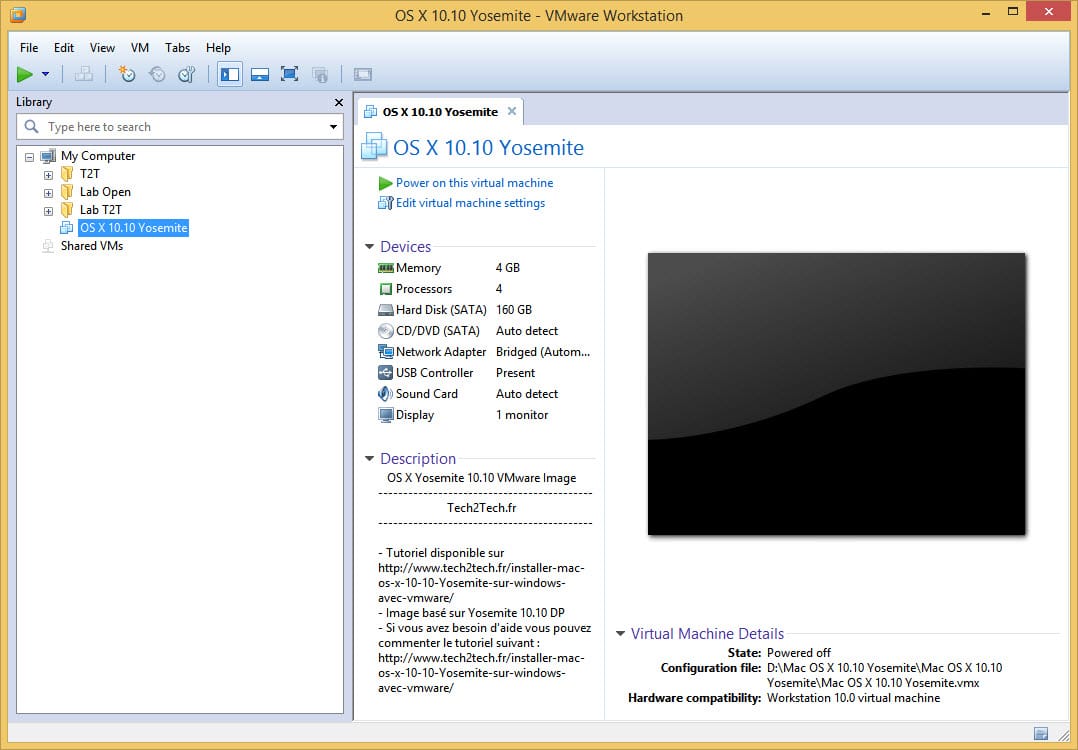
- IMAGE FOR VMWARE MAC OS BIG SUR
- IMAGE FOR VMWARE LICENSE AGREEMENT FOR
- IMAGE FOR VMWARE UPGRADE STORAGE LATER
Image For Vmware Mac OS Big Sur
For Windows users, the Mac OS Big Sur ISO file must be downloaded and installed on a virtual computer. This will aid in the installation of a fresh Mac OS. Download VMware Tools for macOS Big Sur (Direct Link) Go to your macOS Big Sur Virtual Machine Settings > CD/DVD (SATA) > Use ISO image file > Browse.Image: Getty Images/iStockphoto, porpellerDownload macOS Big Sur ISO For VirtualBox & VMware (Direct Link) Users download the macOS Big Sur ISO file in order to create a bootable USB drive. From here you can download and attach the. Mac Os Vmware Image Download Download Mac Os Iso Image Vmware Mac Os X Image Important Note: The download links are macOS Big Sur ISO File, the ISO will work perfectly to install macOS Big Sur on VMware & VirtualBox.Later on, we will create an especially image for you and update the links for you.

Image For Vmware License Agreement For
Also, it is from here that we'll be able to install macOS onto a VM ( Figure B).3. From the console, you'll be able to monitor the vitals of the host server and manage resources, as needed. At the login screen, enter the credentials created during the installation process for ESXi to authenticate ( Figure A).2. Access your ESXi host from the device or from a browser by navigating to the IP address of the host server. Increased availability comes from being able to take snapshots of virtual machines (VMs) for up-to-date backups and being able to move VMs to other less congested hosts with the click of a button or script.SEE: Virtualization policy (Tech Pro Research)While there are other considerations and benefits associated in migrating your physical servers to VMs, the main focus of this article is on how to virtualize macOS so it is hosted on the VMware ESXi hypervisor installed on a Mac server.Note: As per Apple's Software License Agreement for macOS Sierra, Apple will permit you to virtualize up to two instances of macOS Server, so long as it is run on Apple-branded hardware.(iii) to install, use and run up to two (2) additional copies or instances of the Apple Software within virtual operating system environments on each Mac Computer you own or control that is already running the Apple Software, for purposes of: (a) software development (b) testing during software development (c) using macOS Server or (d) personal, non-commercial use.If you have not already installed ESXi on an Apple-branded computer or server, please do so before continuing.SEE: Boost your Mac productivity with these 10 techniques (free PDF) (TechRepublic)1. In permitting IT to do more with less, this helps to keep performance and uptime high, as hosted servers benefit from the allocation of resources while being able to access more, if necessary, from the available pool.
You'll be asked to provide the information necessary to identify the type of VM to be created, including name and OS type ( Figure E). Once the wizard loads, you'll be able to select whether you wish to create a new VM, deploy one from an OVF file, or register an existing one from another virtualization suite ( Figure D).5. To create or register an existing VM, click the New Virtual Machine button to launch the wizard that will guide you through the process.
Image For Vmware Upgrade Storage Later
After selecting the datastore you wish to utilize, click the Next button to proceed ( Figure F).7. Since it is typically performed during the installation of ESXi on the bare-metal server, you can always upgrade storage later by adding hard drives and/or arrays. When selecting data storage, it is important to have the data storage pool set up prior to VM creation/deployment.
If all looks good, click the Finish button to complete the task ( Figure I).9. On the confirmation screen, you can review the settings selected before committing them to the VM. But fret not, they can be modified later by editing the VM settings-for now we just need to configure the VM to boot and run the OS ( Figure G and Figure H).8. Ideally, just about any hardware resource can be allocated, from USB drives to ISOs used to boot the OS-it will all be done here.
When it comes back up, macOS will have installed successfully and should boot and operate the same within the VM as it does when booted directly from a Mac. From here it is the straightforward macOS installation we are all used to ( Figure K).Once the installation has completed, the VM will reboot like usual. For the purposes of this article, a USB flash drive was inserted into the USB port that contains the macOS 10.12 installer and configured the VM settings to be able to boot from that drive, kicking off the installation process for macOS Server. By clicking the Play button, that will power on the VM and allow it to boot to any installation media that has been configured for the VM to use.


 0 kommentar(er)
0 kommentar(er)
